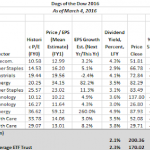The US dollar is mostly firmer, while global equities are softer and bonds little changed. The Turkish lira and South African rand remain under pressures. However, there does not appear to be an overall theme in today’s markets.
Disappointing data from Australia and New Zealand has seen the Antipodean currencies move lower. New Zealand’s business confidence fell to a ten-year low, and this sent the Kiwi tumbling. Its nearly 0.9% fall leads the majors. It is followed by the Australian’s dollar’s 0.25% loss in the wake of building approval (-5.2% vs. the median forecast of -2.0%) and capex (-2.5% vs. the median forecast of a 0.6% increase) misses. The Aussie held yesterday’s low near $0.7275. Last week’s low was near $0.7240.

Japan reported that July retail sales rose 0.1% after the heady 1.4% rise in June. The year-over-year rate of 1.5% was a bit better than expected. The Nikkei managed to eke out a minor gain to extend its advancing streak to eight sessions, though it continues to be frustrated near 23000. Most markets in the region fell, including a 1.15% drop in Shanghai (its third consecutive fall) and the MSCI Asia Pacific Index snapped a four-day advance with a 0.25% loss and an outside down session and a potential key reversal. That said, the pullback stopped just shy of closing the gap from Tuesday’s higher opening. We note that foreign investors continued to buy Korean and Taiwanese shares.
The dollar’s momentum carried it to nearly JPY111.85 yesterday has faded, and the dollar is consolidating in the upper end of yesterday’s range. In the bigger picture, the dollar continues to toy with the weekly downtrend line from 2015. It had been violated last month when the greenback was lifted to a high near JPY113.20 before pulling back. Depending exactly how the trendline is drawn, it appears to come in around JPY111.60.The dollar found support near CNY6.80 in recent sessions and recovered to CNY6.84, new highs for the week.













Leave A Comment